#francisco goya y lucientes
Explore tagged Tumblr posts
Text
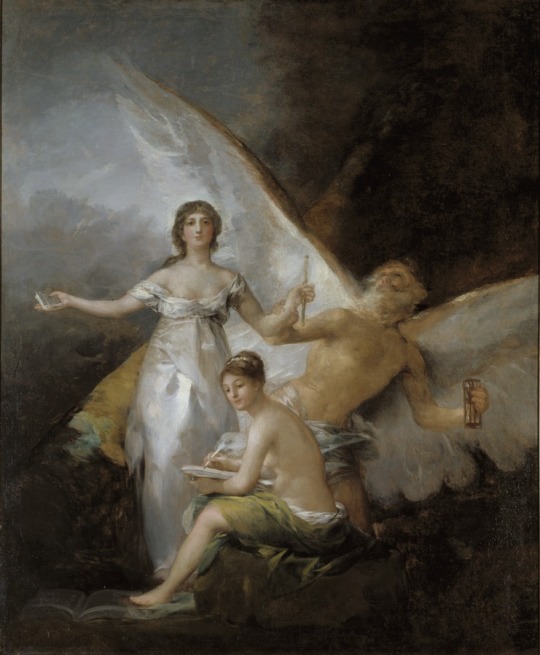
Truth, Time and History
Artist: Francisco Goya y Lucientes (Spanish, 1746–1828)
Date: Unknown
Medium: Oil on canvas
Collection: Nationalmuseum, Stockholm, Sweden
Description
History sits nude on a rock in the front center of the painting, holding a white quill with an open book in her lap. Wrapped around her waist is a green cloth, and another book lies open at her feet.
Time appears behind History, to the right. He is an elderly, bearded man holding an hourglass. His face looks upward so that most of the details of his features are obscured from view. Time bears large, white wings that extend outward, off the canvas on the right and on the left, behind the body of the third figure, who he grips by the arm.
There are conflicting interpretations of the identity of the woman dressed in white on the left of the painting. Most often labeled Truth, she faces the viewer with her breasts partially exposed, holding a scepter in her left hand and a gray book in her right.[citation needed]
The background of the painting is light on the left behind Truth and dark on the right side surrounding Time.
#allegorical art#allegorical painting#oil on canvas#truth#time#history#landscape#white quill#open book#green cloth#elderly man#hourglass#white wings#francisco goya y lucientes#spanish painter#oil painting#artwork#european art
20 notes
·
View notes
Text

Los Zancos (The Stilts)
Artist: Francisco Goya y Lucientes (Spanish, 1746–1828)
Date: 1791-1792
Medium: Oil on canvas
Collection: Museo del Prado, Madrid, Spain
Description
Two young men on high stilts head toward a window out of which a young woman leans. They are accompanied by two other young men on foot, playing the dulzaina. Groups of men wrapped in their capes and with broad-brimmed hats completely covering their faces, as well as women and children, contemplate the festive scene. As in many other works from this period, a simple, everyday subject contrasts with a deeper theme. Here, the stiltwalkers' effort to avoid falling and their gallantry with the lady in the window are a means of denouncing the struggle to survive that period's difficult social conditions. This cartoon was for one of the tapestries intended for Carlos IV's office at El Escorial .
#painting#oil on canvas#genre art#men#women#young men#music#capes#broad brimmed hats#children#festive scene#stilts#francisco goya y lucientes#spanish painter#fine art#building#window#horizon#spanish art#spanish culture#18th century painting#artwork#european art#museo del prado
17 notes
·
View notes
Text

The Devil’s Lamp also known as The Bewitched Man (1798)
by Francisco Goya (Spanish, 1746-1828)
#spanish art#Spanish artist#classical art#traditional art#oil on canvas#art#painting#macabre#macabre art#dark art#Francis Goya#Francisco José de Goya y Lucientes#frostedmagnolias
174 notes
·
View notes
Text
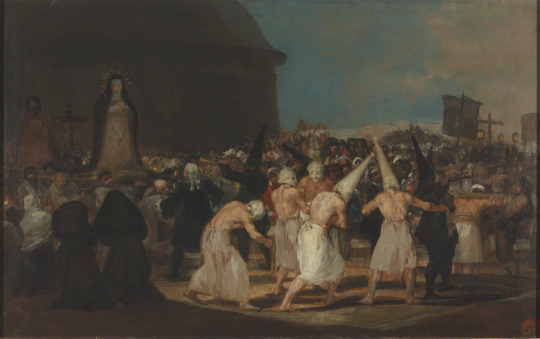
Francisco de Goya (Spanish, 1746-1828) Procesión de disciplinantes (A procession of Flagellants), c.1812-14 Real Academia de Bellas Artes de San Fernando, Madrid, Spain
#different colour and quality#art#Francisco de Goya#Francisco de Goya y Lucientes#goya#spanish art#european art#western civilization#catholic procession#catholic#procession#holy week#procesion de disciplinantes#a procession of flagellants#flagellation#flagellants#flagellant#1800s#1700s#europe#europa#european#spain#spanish#espana#roman catholic
87 notes
·
View notes
Text

Francisco de Goya y Lucientes
Retrato del Matador Pedro Romero (1795-98)
Museo de Arte Kimbell Fort Worth, Texas
26 notes
·
View notes
Text
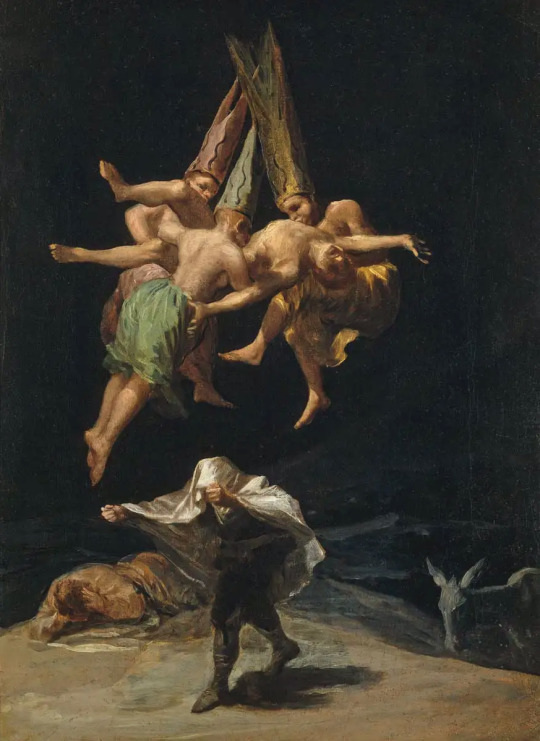
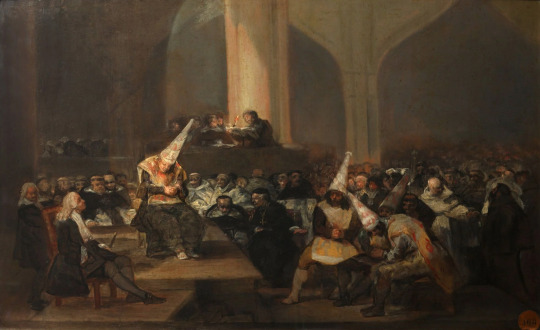
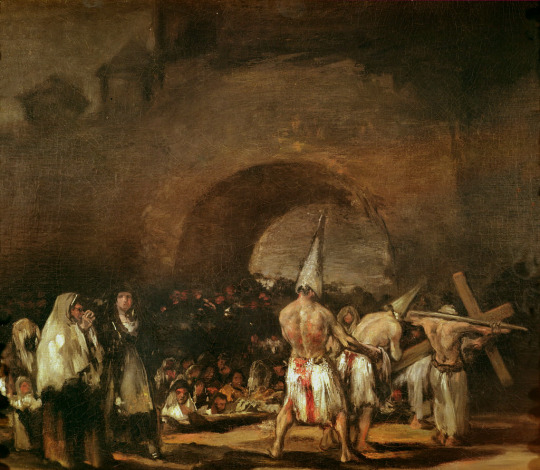
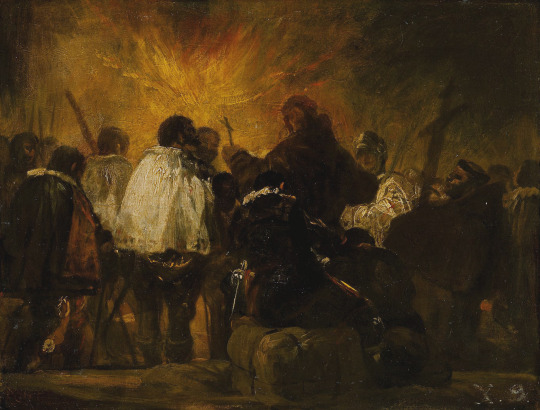


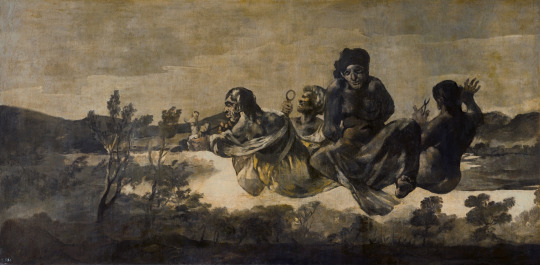

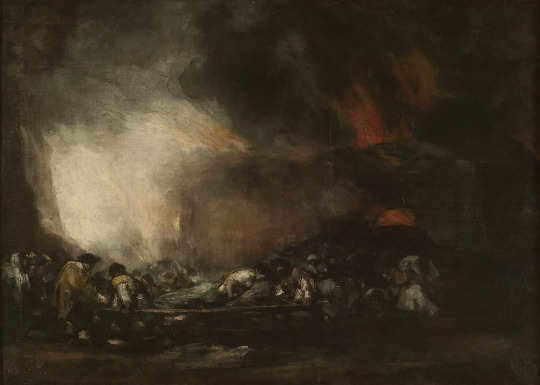

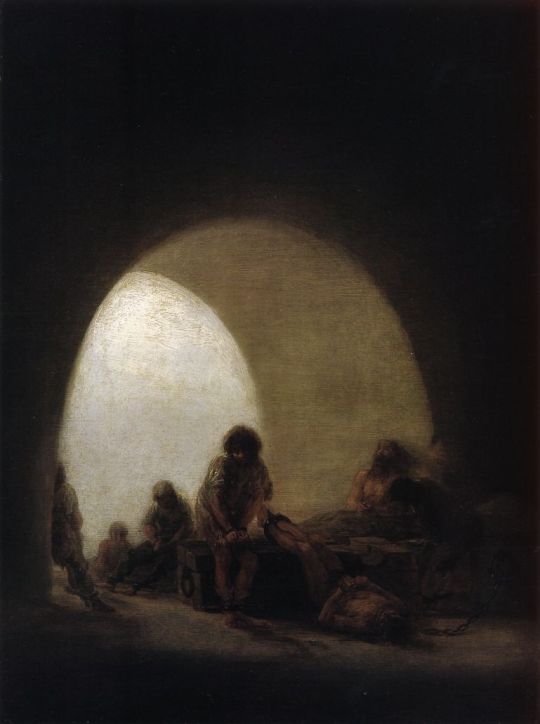
Francisco Goya - a selection of the 'Black Paintings’; religion, oppression, disease and madness.
141 notes
·
View notes
Text

Francisco José de Goya y Lucientes - Witches Sabbath
9 notes
·
View notes
Text

Francisco José de Goya y Lucientes - The Hanged Monk, 1810.
38 notes
·
View notes
Text

Francisco José de Goya y Lucientes
Al Toro y al Aire Darles Calle
12 notes
·
View notes
Text
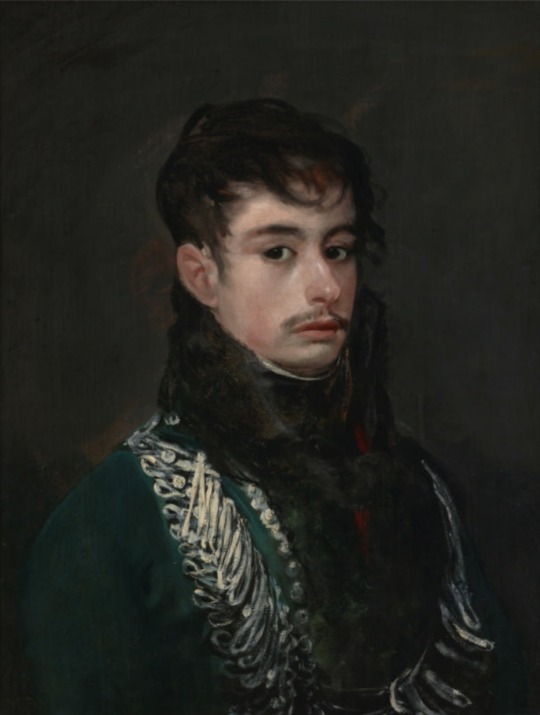
An Officer (Conde de Teba?)
Francisco de Goya y Lucientes (Spanish, 1746-1828)
DATE: ca. 1804 (?)
MEDIUM: Oil on canvas
3 notes
·
View notes
Text

Portrait of Doña María Vicenta Barruso Valdés, seated on a sofa with a lap-dog
Francisco José de Goya y Lucientes
Early 19th century, Napoleonic era
Source: Christie’s
#Francisco José de Goya y Lucientes#Goya#Francisco de Goya#Francisco Goya#Francisco de Goya y Lucientes#19th century#napoleonic era#art#spanish#Spanish art#empire style#empire#empire period#pretty#portrait#arte#Spain#españa#empire dress#napoleonic#flowers#painting
42 notes
·
View notes
Text

The Grape Harvest or Autumn
Artist: Francisco Goya y Lucientes (Spanish, 1746-1828)
Date: 1786
Medium: Oil on canvas
Collection: Museo del Prado, Madrid, Spain
Description
Dressed in yellow clothes that symbolize autumn, a young man sitting on a stone offers a cluster of black grapes to a lady. A boy is eager to reach the offered fruit, which is reserved for the adults. A woman stands next to them, holding a grape basket on her head, much like the classical allegory of the goddess Ceres with fruit on her head. Some grape harvesters are behind them, next to the grapevine that leads to a valley crowned with the suggestion of mountains in the background. Here, following Western painting's traditional iconography, the grape harvest is an allegory of autumn. This is one of the most beautiful and best-known compositions from all of Goya's cartoon series. It's pyramidal structure, and the figures that recall ancient statuary, define the artist's study of the classical artistic tradition.
#allegorical art#allegory of autumn#oil on canvas#francisco goya y lucientes#spanish painter#spanish culture#young man#sitting#standing#harvest#field#women#young boy#basket#grapes#grapevine#grape harvesters#oil painting#artwork#autumn#18th century painting#european art#museo del prado
5 notes
·
View notes
Text

Picador Caught by the Bull
Artist: Francisco Goya y Lucientes (Spanish, 1746–1828)
Date: 1793
Medium: Oil on tinplate
Collection: British Rail Pension Trustee Co., London
Description
Bullfighting is one of the best-known, and most controversial, Spanish popular customs. It is difficult for an outsider to understand the meaning and fascination with bullfighting, which is at once both a performance and a ritual. It is a spectacle, not a sport between two equals. The bull never wins. For its fans, the bullfight is an art, the challenge of man fighting against the beast. To others, it is an archaic tradition. Nowadays, the bullfight is controversial. Many Spaniards believe it is a cruel spectacle that should be abolished and has no part in their modern European culture. Others believe it is the one symbol of Spain that makes the country different.
In eighteenth-century Spain, bullfighting influenced social mores even more vividly than it does today. It was an opportunity for all classes to mingle and unleash primitive passions together. Francisco de Goya was a tremendous fan. He was powerfully attracted to the national sport, a potent symbol of the struggle between the matador, who represents goodness and life, and the bull, a symbol of evil and death. The painter was also fascinated by the outward trappings of the struggle: the speed, courage, skill, and elegance he saw in the participants. The thirty-three pictures in the series that includes Pass With the Cape earned him the nickname "Francisco of the Bulls."
For Goya, bullfighting was simply another aspect of reality - a reality so significant and poetic in itself, so stirring and fascinating that it needed no interpretation. He therefore limited himself to eyewitness accounts, reporting only what he actually saw. He drew and painted bullfighting throughout his life.
Unlike his portraits of the Spanish royal family, Goya's bullfight paintings were not commissioned; he made them to explore his own personal interest. In them, Goya captured both the brutality and the energy of this real-life event.
#bullfighting#bull#matador#spanish culture#horse#francisco goya y lucientes#spanish painter#figures#bull ring#plaza de toros#torero#oil on tinplate#artwork#oil painting#18th century painting#european art
4 notes
·
View notes
Text
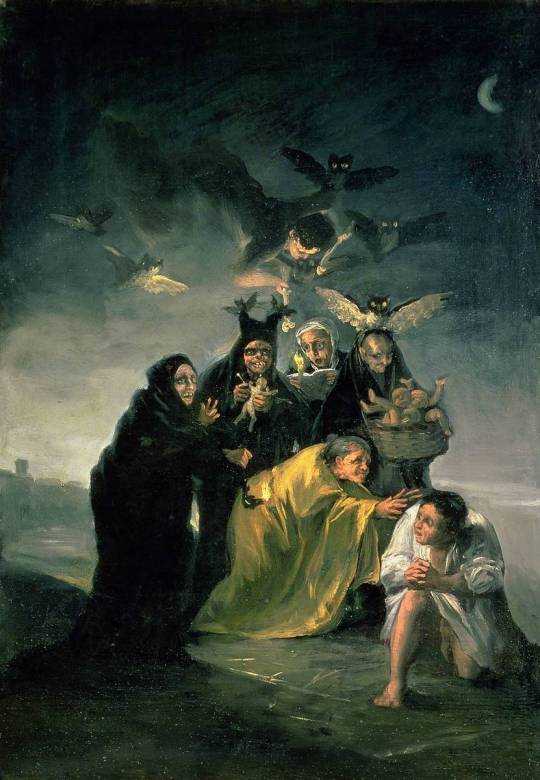
Bruxas
"E arrepiou-se de pânico, cruzando as mãos diante de si, só de lembrar-se da boca entreaberta de Dona Urraca e dos seus dentes brancos."
Jorge de Sena, "O Físico Prodigioso"; pintura de Francisco de Goya y Lucientes (só Goya para os amigos).
5 notes
·
View notes
Text

Francisco de Goya y Lucientes (Spanish, 1746-1828) Las Santas Justa y Rufina, 1817 Sacristía de los Cálices, Seville Cathedral Santa Cruz, Sevilla, Andalucía Justa and Rufina are the patron saints of Seville, whose cathedral is seen in the background. Their legend states that they were sisters and natives of Seville who made fine earthenware pottery for a living, with which they supported themselves and many of the city's poor. Traditionally, they are said to have lived in the neighborhood of Triana. Justa was born in 268 AD, Rufina in 270 AD, of a poor but pious Christian family. During a pagan festival, they refused to sell their wares for use in these celebrations. In anger, locals broke all of their dishes and pots. Justa and Rufina retaliated by smashing an image of Venus. The city's prefect, Diogenianus, ordered them to be imprisoned. Failing to convince them to renounce their faith, he had them tortured on the rack and with iron hooks. This method also having failed, they were imprisoned, where they suffered from hunger and thirst. They were then asked to walk barefoot to the Sierra Morena; when this did not break their resolve, they were imprisoned without water or food. Justa died first. Her body, thrown into a well, was later recovered by the bishop Sabinus. Diogenianus believed that the death of Justa would break the resolve of Rufina. However, Rufina refused to renounce her faith and was thus thrown to the lions. The lion in the amphitheatre, however, refused to attack Rufina, remaining as docile as a house cat. Infuriated, Diogenianus had Rufina strangled or beheaded and her body burned. Her body was also recovered by Sabinus and buried alongside her sister in 287 AD.
#Goya#spanish art#spanish#spain#christian#catholic#Francisco de Goya y Lucientes#art#fine art#european art#classical art#europe#european#fine arts#oil painting#europa#mediterranean#christian art#christianity#christentum#catholic art#catholicism#roman catholic#Justa y Rufina#martyr#martyrs#1800s#roman empire
44 notes
·
View notes
Text

Francisco de Goya y Lucientes
Don José Álvarez de Toledo, marqués de Villafranca y duque de Alba (1795)
Museo Nacional del Prado
25 notes
·
View notes